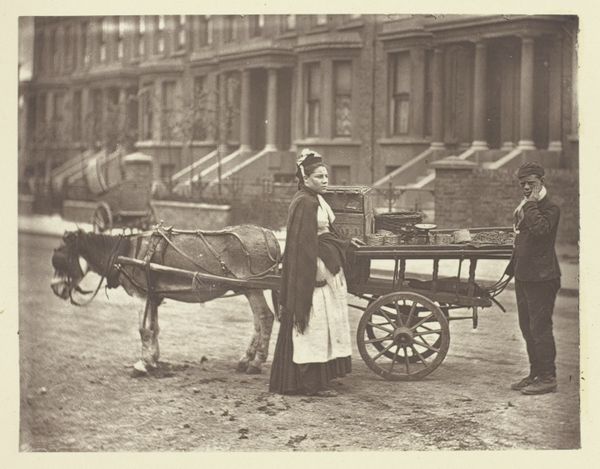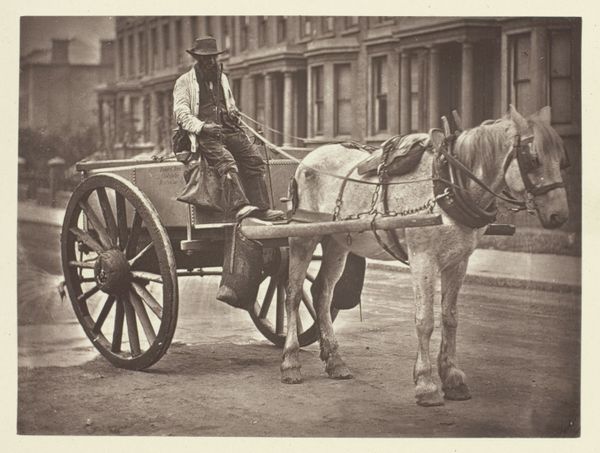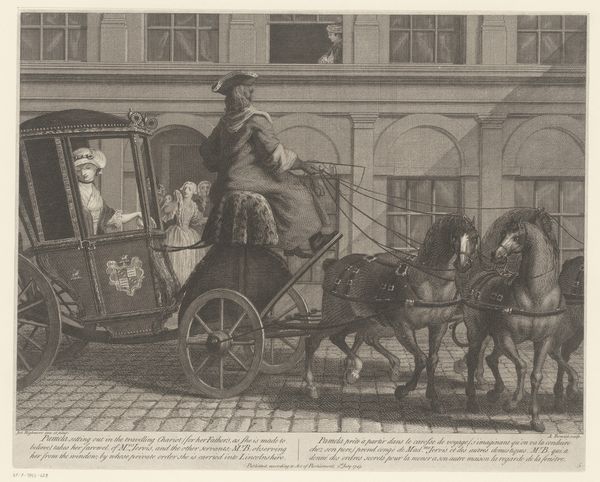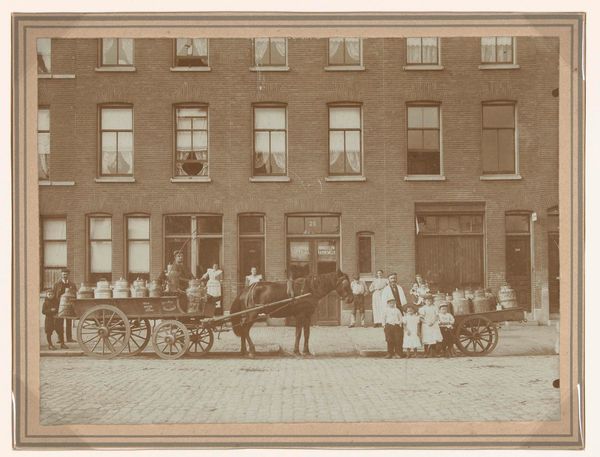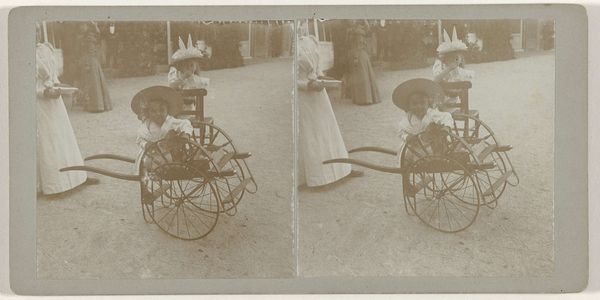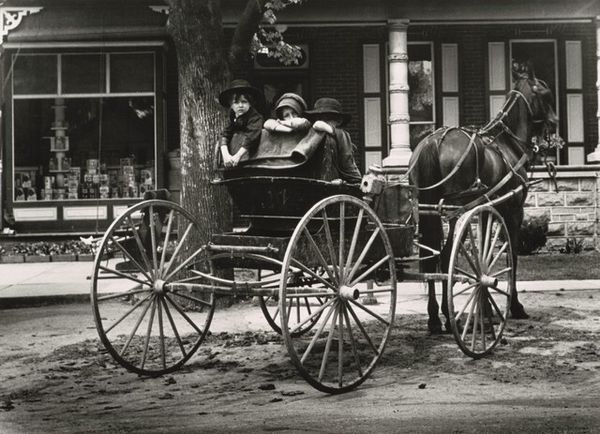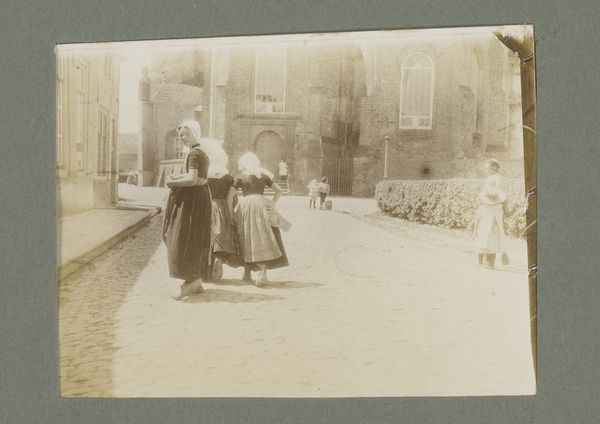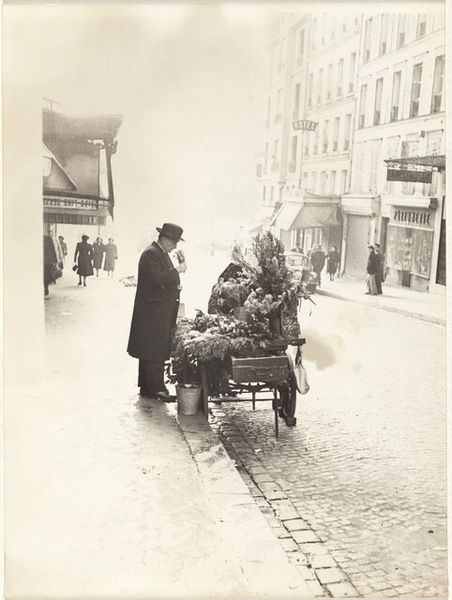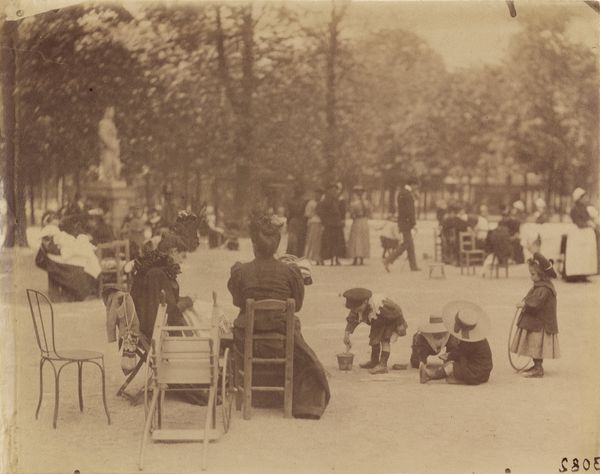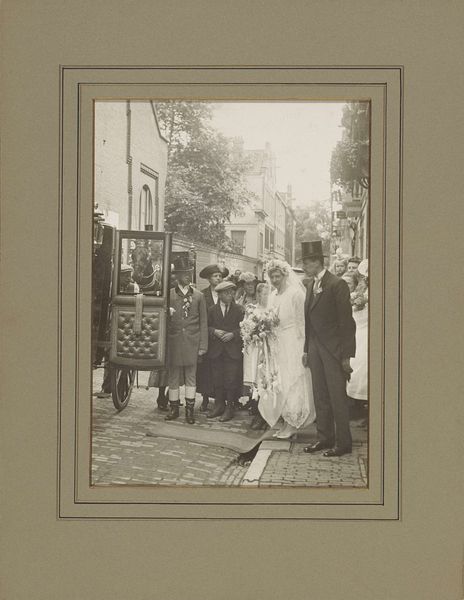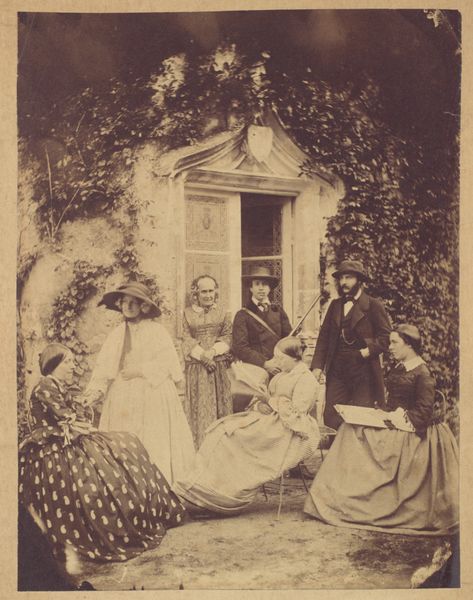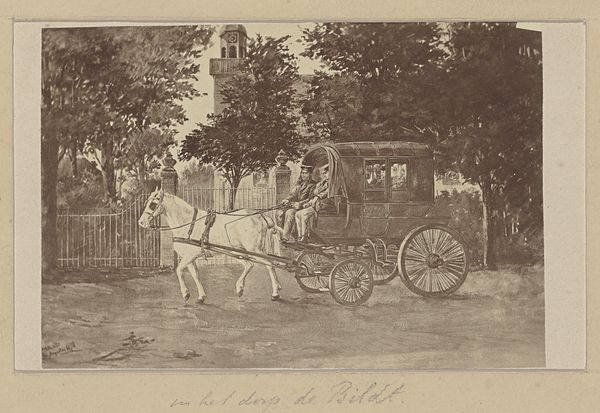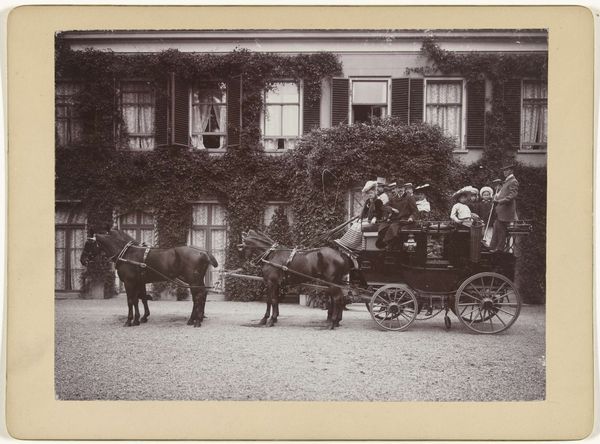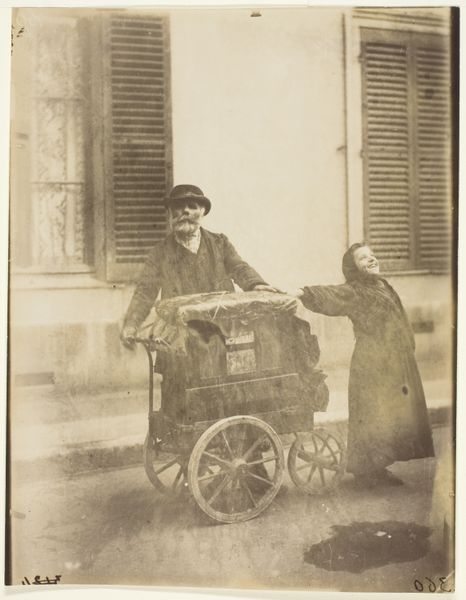
photography
#
african-art
#
street-photography
#
photography
Dimensions: 8.9 × 11.6 cm (image/paper); 27.7 × 21.3 cm (page/mount)
Copyright: Public Domain
Curator: Let's consider John Thomson's photograph, "November Effigies," from 1881. What are your initial impressions? Editor: Well, it’s a black and white photograph of a group of people, some in a cart pulled by a donkey. There’s a woman with a drum standing to the side. It feels like a staged performance in an urban environment. How do you interpret this work? Curator: It's crucial to understand the social and political context of 19th-century London. These "effigies" were actually groups of Black street performers. Thomson’s photographs, while seemingly documenting them, participated in a colonial gaze. These performers often occupied a liminal space, both hyper-visible and marginalized. The clothes could point at minstrelsy shows which mock cultures. Editor: So, you're saying that while it looks like a simple street scene, it actually reinforces existing power dynamics and perhaps racial stereotypes? Curator: Exactly. The photograph isn't just a neutral observation, but a construction of a specific narrative. Consider, who is behind the camera? A white, middle-class photographer. What power does he hold in capturing and displaying these subjects? How does the act of photographing further commodify their image and performances? The image raises ethical questions about representation. Does the staged quality suggest manipulation, impacting the subject's voice? Editor: That’s a perspective I hadn't fully considered. So looking at art through this historical lens forces us to really consider its impact, both then and now, doesn't it? Curator: Precisely. It encourages us to interrogate the inherent biases within seemingly objective documentation. These photos force us to think critically about who is telling the story and why. Editor: I appreciate this critical, historical interpretation. I see a new set of issues within what I had initially taken as a depiction of everyday life.
Comments
No comments
Be the first to comment and join the conversation on the ultimate creative platform.
